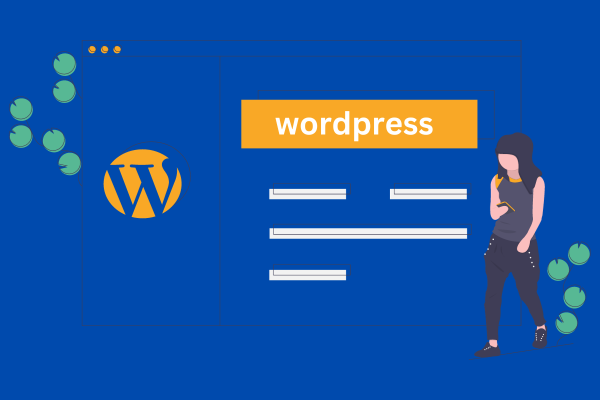WordPress is a popular open-source content management system (CMS) that allows users to create and manage websites without the need for extensive coding knowledge. It is known for its flexibility, ease of use, and a large ecosystem of themes and plugins that extend its functionality. Here’s a beginner’s guide to understanding and starting with WordPress:
Table of Contents
Wondering about the foundation of countless websites across the internet? Dive into the realm of web creation with our comprehensive guide on What is WordPress. As the go-to content management system (CMS), WordPress empowers both beginners and seasoned developers to craft stunning websites effortlessly. In this article, we unravel the mysteries behind this open-source platform, exploring its features, functionalities, and the answer to the fundamental question: What is WordPress?
“What is WordPress?” — a question often asked by those stepping into the digital landscape. If you’re eager to understand the backbone of the online world, you’re in the right place. In this blog post, we demystify WordPress, the versatile CMS that underpins blogs, business sites, and more. Join us on a journey through the core features, user-friendly interface, and the immense flexibility that has made WordPress the cornerstone of web development.
In the dynamic universe of website creation, “What is WordPress?” echoes as a common inquiry. Unravel the intricacies of this powerful content management system as we explore its origins, evolution, and the myriad possibilities it offers. Whether you’re a novice intrigued by the world of blogging or an entrepreneur seeking a robust online presence, understanding WordPress is key to unlocking a realm of possibilities.
Curiosity about website building often leads to the fundamental question, “What is WordPress?” WordPress, an open-source platform, transcends coding complexities, offering an intuitive interface for crafting websites. Join us as we delve into the nuances of this CMS giant, shedding light on its history, features, and the seamless web development experience it provides.
1. What is WordPress?

Content Management System (CMS):
WordPress is a CMS, which means it helps you manage the creation and modification of digital content. It allows you to build and organize your website without having to code everything from scratch.
Open Source:
WordPress is open-source software, which means its source code is freely available to the public. This allows developers to contribute to its improvement, and users can customize it according to their needs.
2. How WordPress Works:

nstallation:
To use WordPress, Many hosting providers offer one-click installations, or you can manually install it by downloading the software from the official website.
Themes:
WordPress uses themes to control the visual appearance of your site. Themes define the layout, colors, fonts, and other design elements. There are thousands of free and premium themes available.
Plugins:
Plugins add extra functionality to your WordPress site. They can be used to add contact forms, SEO tools, e-commerce features, and more. Like themes, there are both free and premium plugins.
Content Creation:
WordPress allows you to create different types of content, such as posts and pages. Posts are typically used for blog entries, while pages are for static content like your ‘About’ or ‘Contact’ page.
Media Management:
You can easily upload and manage images, videos, and other media files within the WordPress dashboard.
User Management:
WordPress provides user roles with varying levels of permissions. This allows you to control who can do what on your site.
Updates:
Regularly update your WordPress core, themes, and plugins to ensure security and take advantage of new features.
3. Getting Started:
Domain and Hosting:
Choose and register a domain name for your site. Select a reliable hosting provider to store your website files.
Install WordPress:

Follow the hosting provider’s instructions to install WordPress. Many providers offer one-click installations.
Login to Your Dashboard:
Access your WordPress dashboard by going to your domain followed by “/wp-admin” (e.g., yourwebsite.com/wp-admin). Log in with the credentials you created during the installation.
Choose a Theme:
Navigate to “Appearance” > “Themes” in the dashboard to choose a theme. You can search for free themes or upload a premium theme if you have one.
Install Essential Plugins:
Install plugins for essential features, such as SEO optimization, security, and contact forms. Some popular plugins include Yoast SEO, Word fence Security, and Contact Form 7.
Create Content:
Start creating content by adding pages and posts. Customize the content and use the visual editor for formatting.
Explore and Experiment:
Spend time exploring the WordPress dashboard, experimenting with settings, and customizing your site to fit your needs.
Learn and Improve:
There are plenty of online resources, tutorials, and communities where you can learn more about WordPress. As you become more comfortable, you can explore advanced features and customization options.
Remember, WordPress is user-friendly, and there’s a wealth of information available online to help you on your journey. Don’t hesitate to explore and experiment to create the website you envision.

